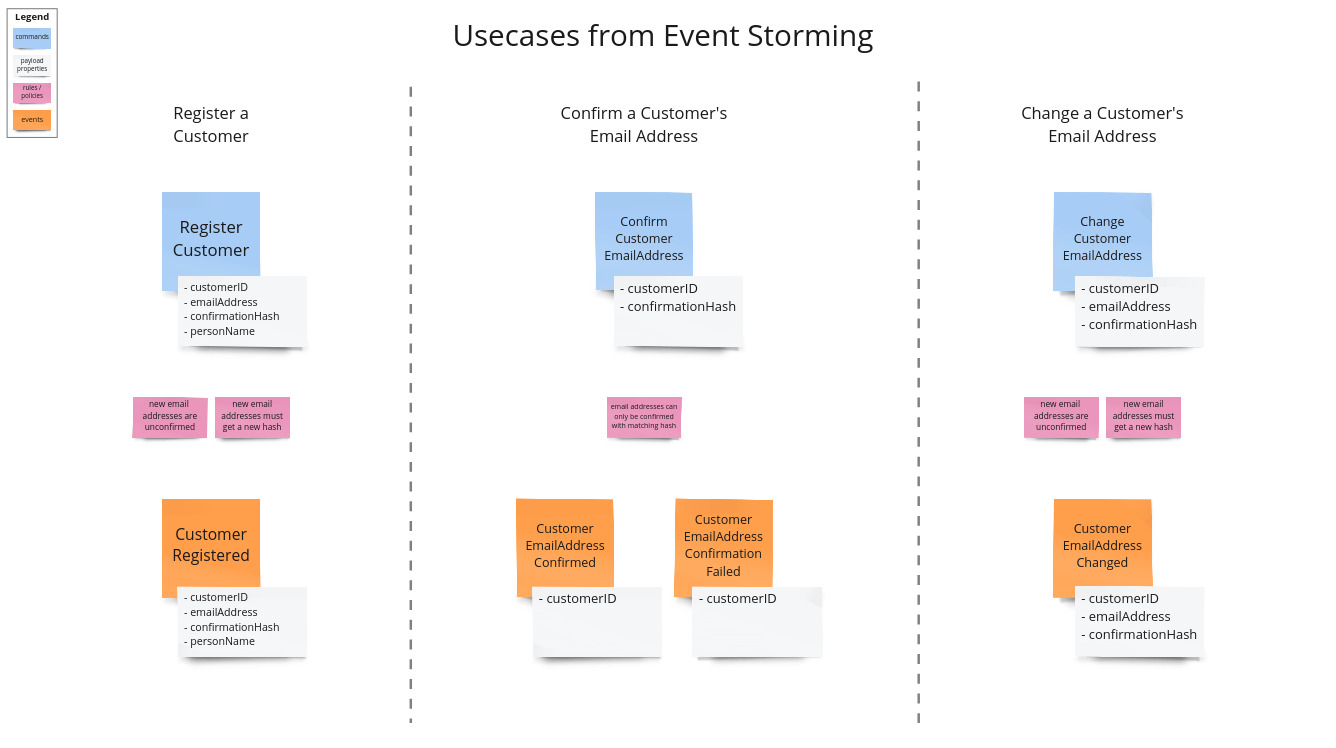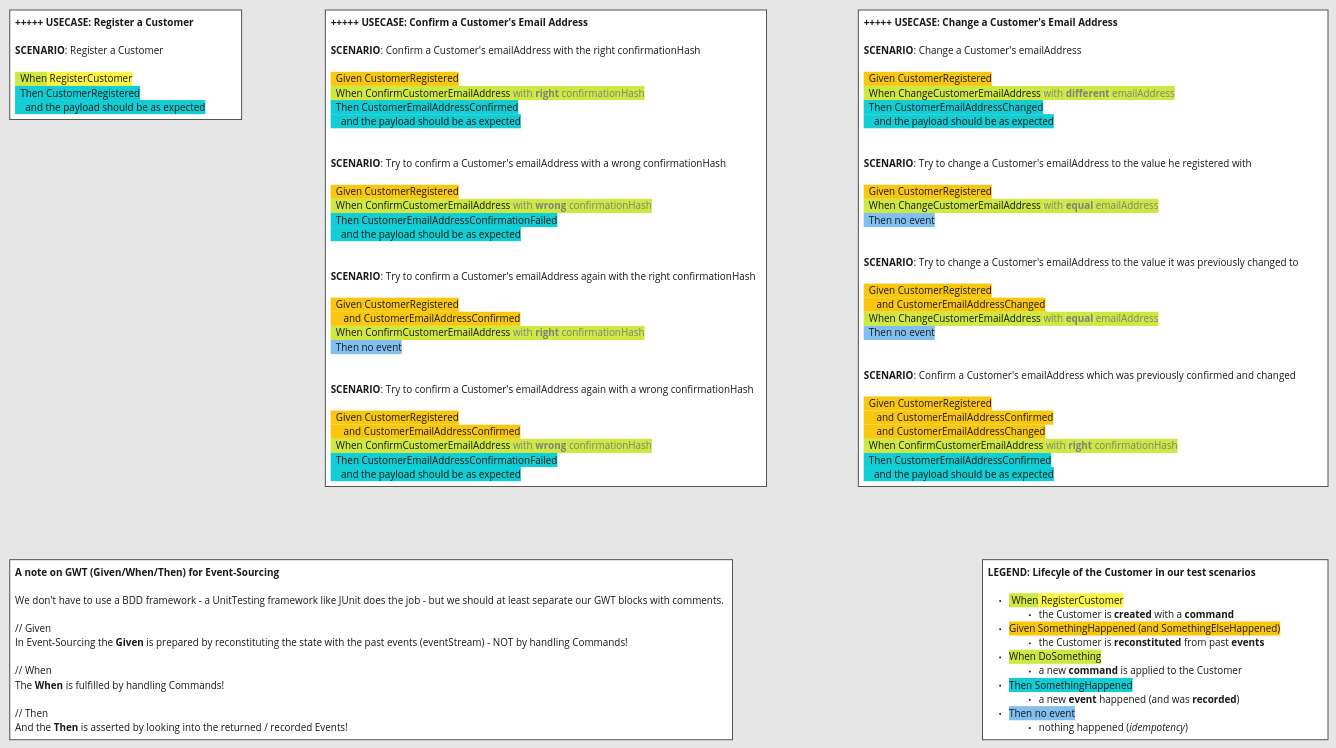There are a lot of different possibilities when implementing an aggregate. Many of them are not generally better than others, hence it's crucial to take the use case into account when deciding for one model. We want to have a look at a few different patterns together and discuss their pros and cons. In the end, you should have more options to choose from for your next project.
While this is certainly a very simplified approach, we'll focus on the following two primary dimensions:
- event-sourced vs. traditional (i.e. full state gets persisted)
- functional vs. object-oriented
We have prepared 7 variants of the Customer model for you, and most of them contain tasks that you will have to solve. Here is how those variants map to our two dimensions:
| ES | TRAD | |
|---|---|---|
| OOP | Customer3, Customer4 | Customer1 |
| FP | Customer5, Customer6, Customer7 | Customer2 |
In this workshop, we want to focus on a Customer aggregate supporting three simple use cases. The details, which you can find below, could have been collected in an Event Storming workshop beforehand:
Command: RegisterCustomer with properties
- customerID (ID)
- emailAddress (EmailAddress)
- confirmationHash (Hash)
- name (PersonName)
Event: CustomerRegistered with properties
- customerID (ID)
- emailAddress (EmailAddress)
- confirmationHash (Hash)
- name (PersonName)
Rules & Policies:
- new email addresses are unconfirmed
- new email addresses must get a new hash
Command: ConfirmCustomerEmailAddress with properties
- customerID (ID)
- confirmationHash (Hash)
Event: CustomerEmailAddressConfirmed or CustomerEmailAddressConfirmationFailed, both with property
- customerID (ID)
Rules & Policies:
- email addresses can only be confirmed with matching hash
Command: ChangeCustomerEmailAddress with properties
- customerID (ID)
- emailAddress (EmailAddress)
- confirmationHash (Hash)
Event: CustomerEmailAddressChanged with properties
- customerID (ID)
- emailAddress (EmailAddress)
- confirmationHash (Hash)
Rules & Policies:
- new email addresses are unconfirmed
- new email addresses must get a new hash
Our Customer gets registered with a name (PersonName), but we have removed the Change Name use-case for brevity, so that you are able to implement all use-cases in all variants. Still, there is a ChangeCustomerName Command and a CustomerNameChanged Event in the codebase. If we are super fast, we can use them to add this use-case.
We have prepared 7 variants of the Customer model for you, and most of them contain tasks that you will have to solve.
For each model variant, you can find a class CustomerX containing production code as well as a corresponding test class CustomerXTest, which contain the following test scenarios which are written in the Given/When/Then (GWT, Gherkin language) format:
For each CustomerX:
The production code is missing relevant pieces of code which you will have to fill to make
the tests green. There are TODO comments which mark where code is missing. You don't have to modify test cases,
and you don't have to modify the existing code to complete the tasks.
Please always make the first failing test green!
The repository contains a Gradle build file to set up the dependencies (Junit 5.7).
The two traditional (full state gets persisted) variants are rather trivial, each of you has probably implemented such models before. Therefore, we will just have a look at them together and discuss them. One interesting aspect will be how to test them.
- state and behavior is the same object
- directly modifies the state
- state and behavior are different objects
- directly modifies the state
- directly returns the events that have happened
- records the events that have happened
- the client (e.g. an Application Service) has to request those events
- internal state per function (variables)
- those variables get reconstituted inside of the behavior functions from the events that are given as input
- uses a state object (CustomerState)
- this is reconstituted inside of the behavior functions from the events that are given as input
- uses a state object (CustomerState)
- this is reconstituted outside and given as input to the behavior functions
- figure our the requirements with your group
- have a look at the ChangeCustomerName Command and CustomerNameChanged Event
- implement the required test cases first
- implement just enough production code to make the test pass

